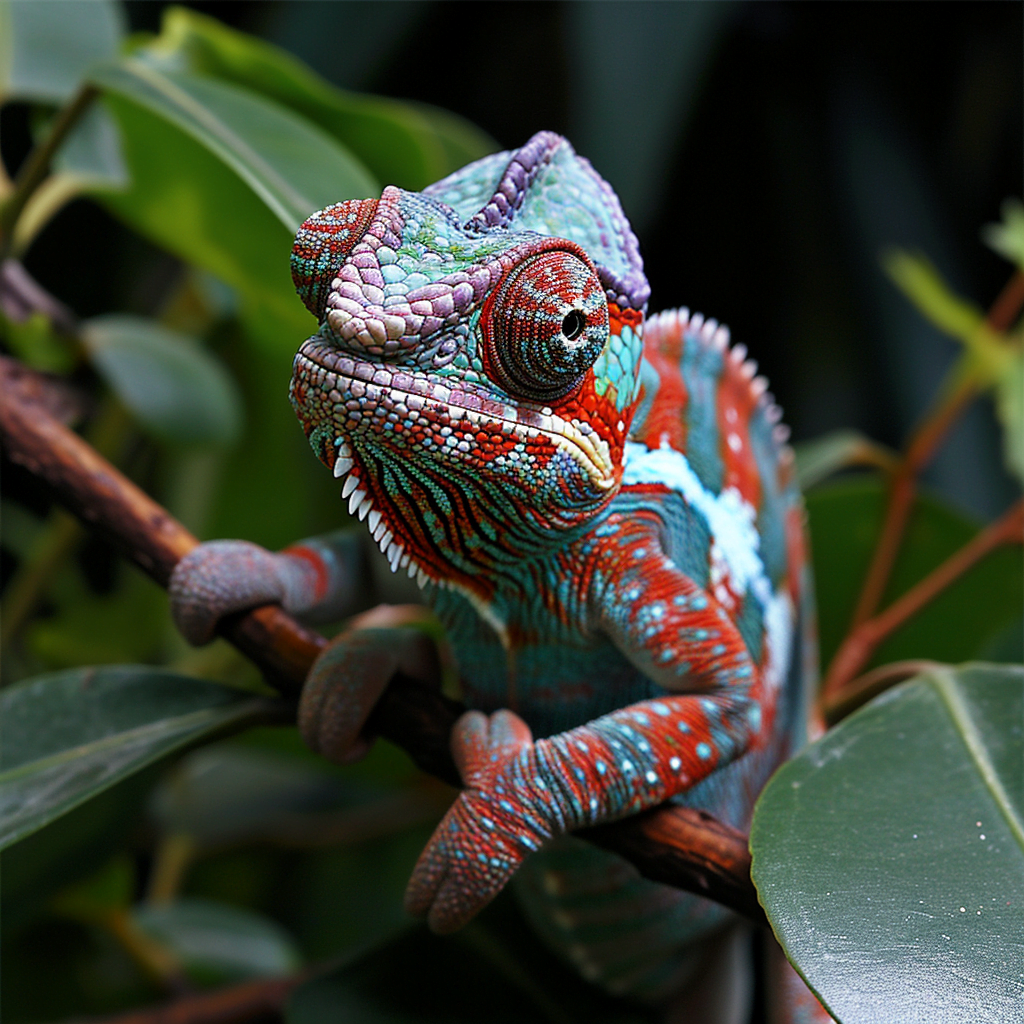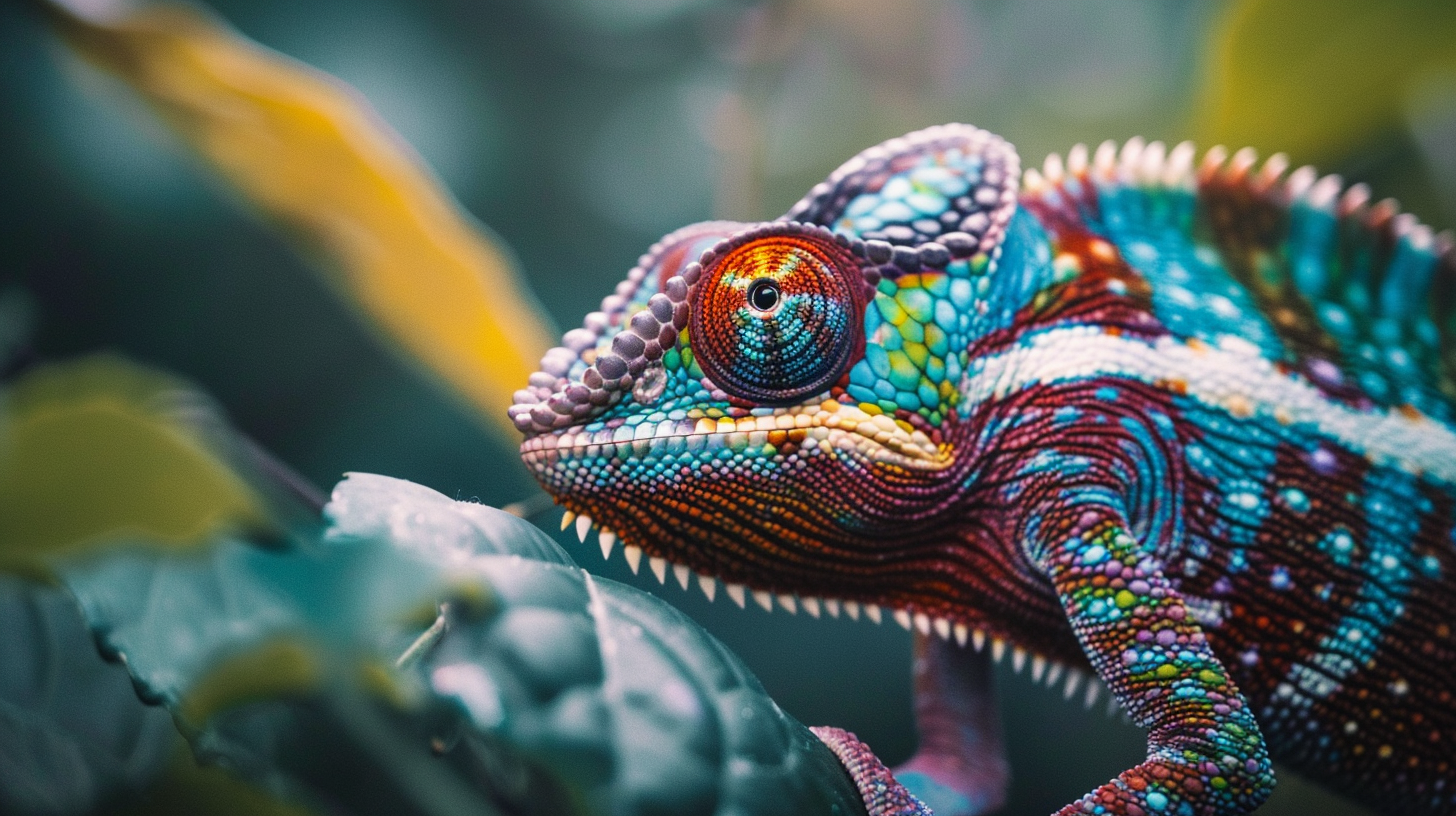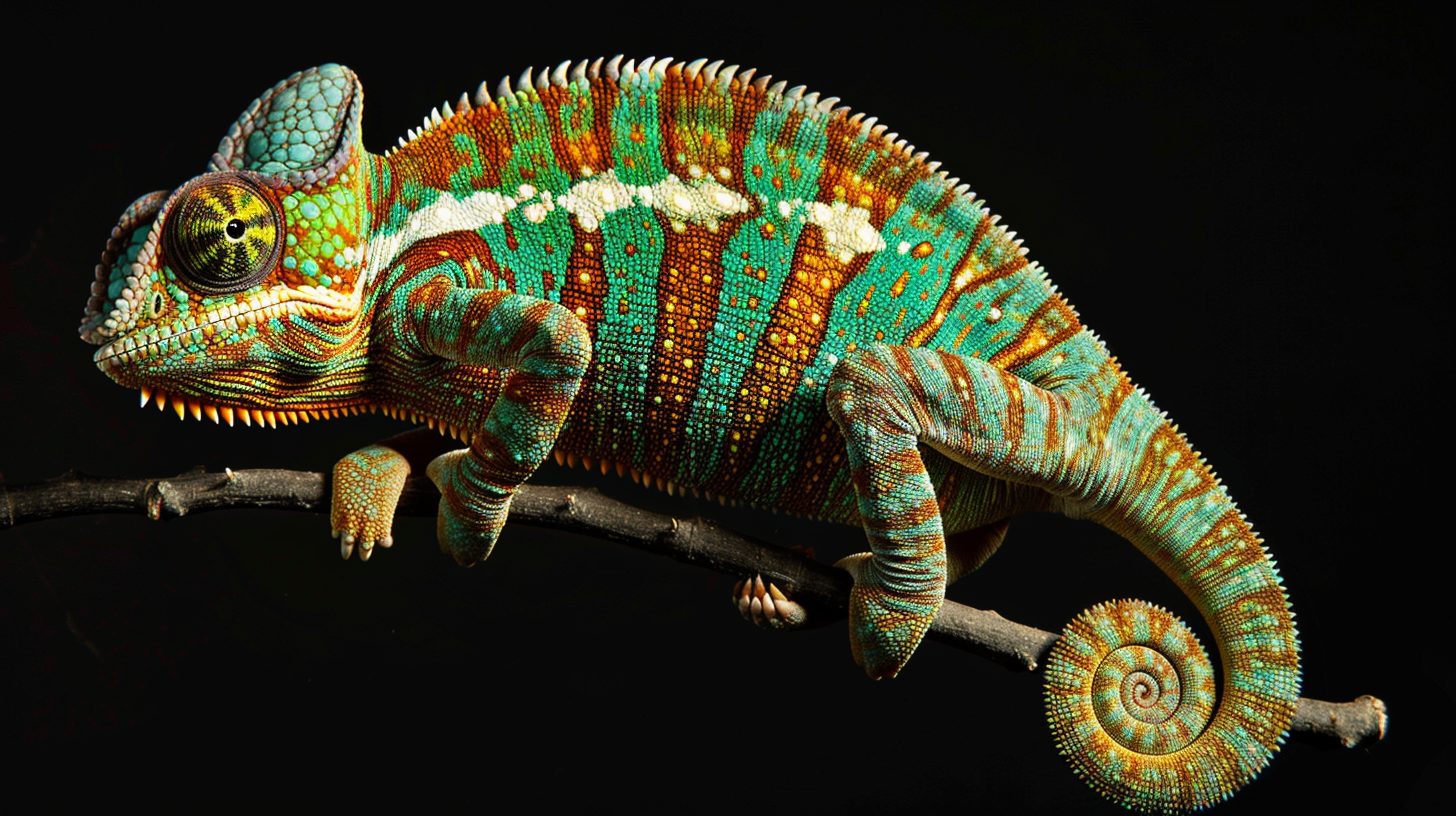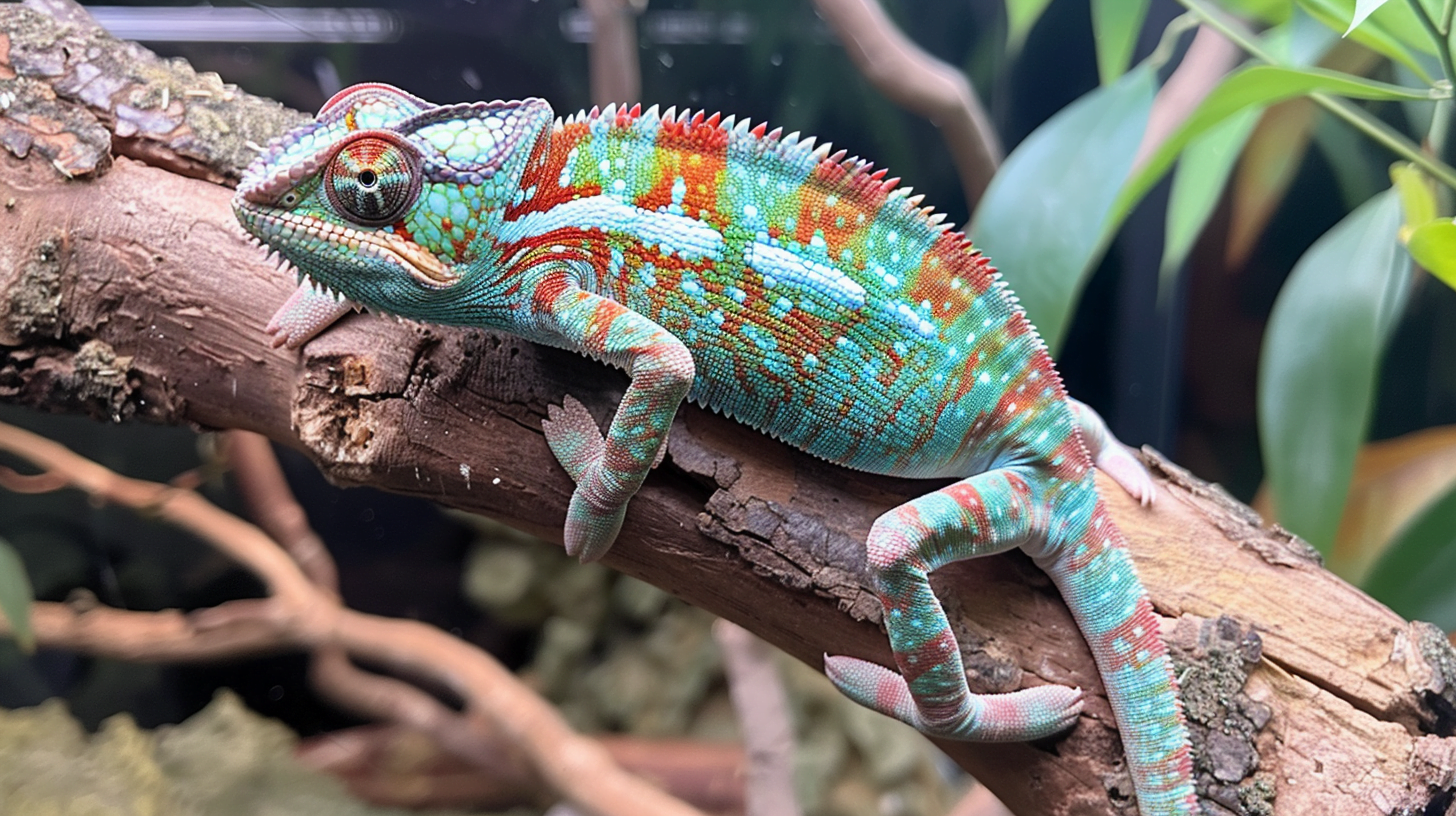Throughout this article, I will explore the intriguing question that has piqued the curiosity of many reptile enthusiasts and prospective chameleon owners: does a chameleon bite? With their ability to change colors and unique physical characteristics, chameleons have captured the fascination of people worldwide. However, understanding their behaviors, including their potential to bite, is crucial for both the safety of humans and the well-being of these captivating creatures. By examining the diverse chameleon species and their natural instincts, we can gain insights into their biting tendencies and dispel common misconceptions.
Physical Characteristics of Chameleons
Chameleons are a unique and fascinating group of reptiles known for their distinctive physical characteristics. There are over 200 species of chameleons, each with its own unique traits and variations. These reptiles are renowned for their ability to change color, their elongated bodies, and their long, prehensile tails.
| Species Name | Average Size (cm) | Primary Diet | Color Range | Typical Habitat | Aggression Level (1-5) | Conservation Status |
|---|---|---|---|---|---|---|
| Veiled Chameleon | 50 | Insects | Green, blue, brown | Forests, deserts | 3 | Least Concern |
| Panther Chameleon | 45 | Insects, small birds | Blue, green, red | Rainforests | 2 | Vulnerable |
| Jackson’s Chameleon | 30 | Insects | Green, brown | Forests, grasslands | 1 | Near Threatened |
| Pygmy Chameleon | 15 | Insects | Brown, green | Rainforests, woodlands | 1 | Least Concern |
| Oustalet’s Chameleon | 70 | Insects, lizards | Green, grey, brown | Savannas, grasslands | 4 | Endangered |
| Flap-necked Chameleon | 35 | Insects | Green, yellow, brown | Forests, savannas | 2 | Least Concern |
Overview of chameleon species
Chameleons are divided into various species, each adapted to different environments and habitats. Their physical characteristics vary greatly depending on the species, with some having horn-like projections on their heads, and others having casques (helmet-like structures). Chameleon species can range in size, with the smallest species measuring just a few centimeters, and the largest species reaching lengths of up to 70 centimeters.
Distinctive features of chameleons
One of the most remarkable features of chameleons is their ability to change color. This adaptation allows them to blend into their surroundings and is primarily used for communication and camouflage. Additionally, chameleons have specialized feet that enable them to grasp onto branches and climb with ease. Their eyes are also unique, as they can move independently of each other, providing them with a remarkable field of vision.
Anatomy of a chameleon
A typical chameleon has a slender body, with a long tail and a triangular-shaped head. Their skin is covered in small, bumpy scales that contribute to their overall texture. Chameleons also have a prehensile tongue, which they use to capture prey. Their internal organs are well-adapted to their arboreal lifestyle, with the lungs and heart positioned to facilitate efficient oxygenation and circulation while climbing and perching.
Chameleon’s natural habitat
Chameleons are primarily found in tropical and subtropical regions around the world, including Africa, Madagascar, Europe, and Asia. They are arboreal creatures, meaning they spend most of their lives in trees and shrubs. These reptiles prefer habitats with ample vegetation and access to water sources, such as rainforests, savannas, and coastal regions. The diverse range of chameleon species allows them to occupy a wide variety of ecosystems, each with its own set of physical characteristics and requirements.
Understanding Chameleon Behavior
In addition to their unique physical characteristics, chameleons also exhibit fascinating behavioral traits. Understanding their behavior is essential for both researchers and individuals who keep chameleons as pets.
Chameleon temperament
Chameleons are generally known to be solitary and territorial creatures. They prefer to live alone and can become aggressive towards other chameleons, especially during breeding season or when defending their territory. However, the extent of aggression can vary among different species and individuals. Some chameleon species may be more docile and tolerant of cohabitation, while others are more prone to aggression and stress.
Different modes of communication
Chameleons communicate using various methods, including visual displays, body language, and vocalizations. They have the ability to change their skin color, which plays a crucial role in communication. Brighter colors are often used to attract mates or establish dominance, while darker colors can signal aggression or submission. Alongside color changes, chameleons may display different bodily postures, such as puffing up their bodies or extending their dewlaps (throat fans), to convey specific messages.
Chameleon’s hunting techniques
Chameleons are skilled hunters, employing a variety of techniques to capture their prey. Their main method of hunting is to wait patiently and remain motionless on branches or foliage, relying on their excellent camouflage to blend in with their surroundings. Once a suitable prey item comes within range, the chameleon rapidly extends its tongue with lightning speed to capture the unsuspecting victim. This specialized hunting technique allows chameleons to catch insects and other small organisms with great accuracy and precision.
Interaction with their surroundings
Chameleons have a unique ability to interact with their environment, primarily through their exceptional climbing skills and the ability to change their color. Their specialized feet provide them with a strong grip on branches, allowing them to move with ease in the treetops. When it comes to camouflage, chameleons can adjust their skin color to match their surroundings, making them virtually invisible to predators and potential prey. This adaptation enables them to hide from threats and blend into their environment seamlessly.
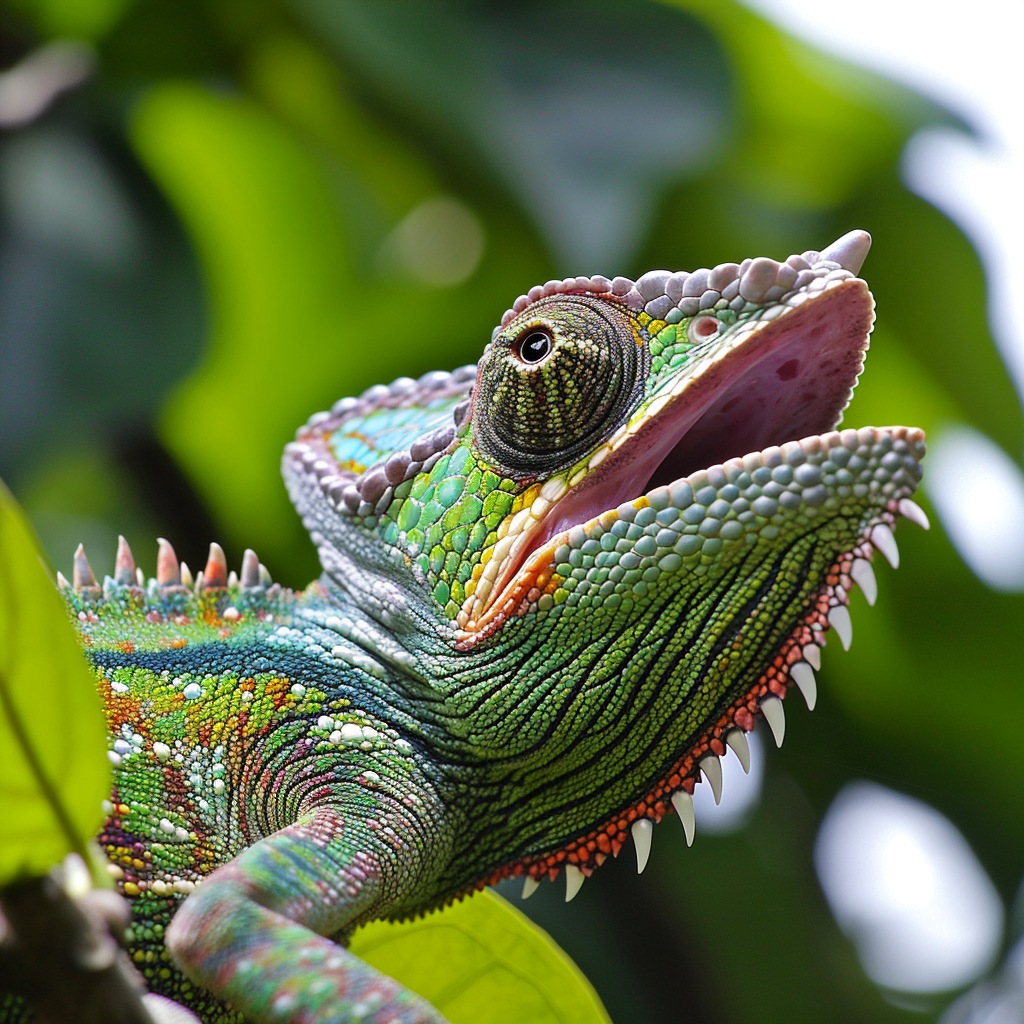
Feeding Habits of Chameleons
Chameleons have specific dietary preferences and hunting strategies that are tailored to their arboreal lifestyle. Understanding their feeding habits is crucial for maintaining their health and well-being.
Dietary preferences
Chameleons are primarily insectivores, with their diet consisting mainly of various insects and other invertebrates. They have a preference for small and slow-moving prey, such as crickets, flies, and spiders. Some larger chameleon species may also consume small vertebrates like lizards or birds. However, it is important to ensure a balanced diet that provides the necessary nutrients, vitamins, and minerals for their optimal health.
Hunting strategies
Chameleons employ stealth and patience as their primary hunting strategies. They rely on their excellent eyesight and ability to remain motionless for extended periods to locate their prey. Once the prey is within striking range, the chameleon extends its long, sticky tongue to capture and retract its meal. This rapid tongue projection, combined with their accuracy, allows them to catch prey items from a distance without expending much energy.
Types of prey for chameleons
Chameleons have a broad range of potential prey, including insects such as crickets, grasshoppers, and beetles. They may also consume spiders, moths, and other small arthropods. Some larger chameleon species may occasionally consume small lizards or birds. However, it is essential to provide a varied diet to ensure the chameleon receives all the necessary nutrients and to avoid any nutrient deficiencies or imbalances.
Unique feeding adaptations
A notable feeding adaptation of chameleons is their prehensile tongue. This specialized tongue is capable of extending several body lengths to capture prey. The tongue is covered in a sticky secretion that allows the chameleon to quickly and efficiently grab its prey. Once the prey is caught, the chameleon retracts its tongue, bringing the food into its mouth. This feeding mechanism, combined with their ability to change their skin color and blend into their surroundings, contributes to the overall success of chameleons as hunters.
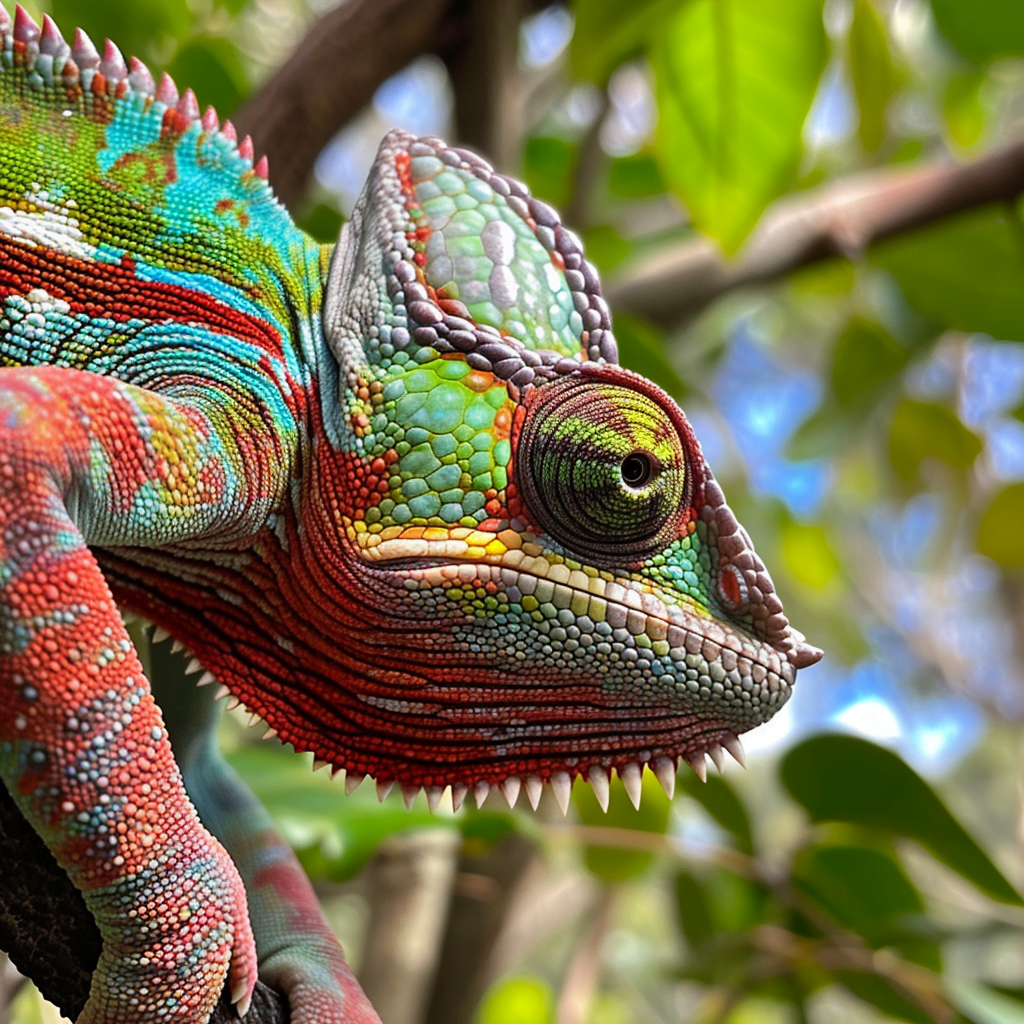
Chameleon’s Defensive Mechanisms
Chameleons have evolved several defensive mechanisms to protect themselves from predators and threats in their environment. These adaptations have allowed them to survive in diverse habitats and navigate the challenges of their natural surroundings.
Role of camouflage in protecting against predators
Camouflage is one of the most crucial defensive mechanisms employed by chameleons. Their ability to change color enables them to blend seamlessly into their surroundings, making it difficult for predators to detect them. Being able to match their environment can provide chameleons with a significant advantage, allowing them to evade potential threats and remain hidden.
Chameleon’s ability to change colors
Chameleons have specialized cells in their skin called chromatophores, which contain pigments responsible for their coloration. These cells can expand or contract, causing the skin to appear different colors. The color-changing ability of chameleons is influenced by factors such as temperature, light, stress, and social interaction. By adjusting their skin color, chameleons can communicate with others of their species, display dominance or submission, and blend into their surroundings to avoid detection.
Mimicry as a defense strategy
In addition to camouflage, some chameleon species also employ mimicry as a defense strategy. They may imitate the appearance or behavior of other animals or objects in their environment to deter predators. For example, some chameleons can mimic the appearance of leaves or twigs, further enhancing their camouflage and making it extremely challenging for a predator to identify them.
Fighting techniques of chameleons
When faced with a potential threat or during territorial disputes, chameleons may resort to fighting as a means of defense. Males, in particular, may engage in combat to establish dominance or to compete for mates. Fighting techniques vary among species, but typically involve visual displays such as puffing up their bodies, extending their dewlaps, and aggressive posturing. Physical contact, such as biting and grappling, may also occur during combat. These fighting techniques serve to intimidate opponents and establish a hierarchy within the chameleon population.
Chameleon’s Mouth Structure
The mouth structure of a chameleon plays a vital role in their feeding adaptations and overall survival. The specialized mouth and associated structures allow chameleons to efficiently capture and consume their prey.
Overview of chameleon’s mouth
A chameleon’s mouth is located at the front of its head, positioned for ease of capturing prey. The mouth contains various structures, including teeth, jaws, and a highly specialized tongue. These anatomical features work together to facilitate efficient feeding and prey capture.
Teeth and jaw structure
Chameleons have a unique dental arrangement compared to other reptiles. Rather than having a continuous row of teeth, they possess small, conical teeth in their upper and lower jaws. The teeth are not used for chewing but rather for gripping and holding onto the captured prey. The jaws of chameleons are highly specialized and capable of opening wide to accommodate the extension of their long, sticky tongue.
Importance of a chameleon’s tongue
A chameleon’s elongated and highly flexible tongue is a crucial component of its feeding adaptations. The tongue is capable of rapid extension and retraction, allowing the chameleon to capture prey items from a considerable distance. The tongue is covered in a sticky secretion that helps to ensnare the prey, enabling the chameleon to bring it into its mouth. The tongue plays a vital role in the chameleon’s hunting technique and contributes to its effectiveness as a predator.
Salivary glands and their role
Salivary glands in chameleons play an essential role in the capture and digestion of prey. These glands produce saliva, which contains enzymes that help break down the captured food. The sticky nature of the saliva also aids in capturing and holding onto prey. The salivary glands work in conjunction with the tongue, teeth, and jaws to facilitate efficient feeding and digestion.
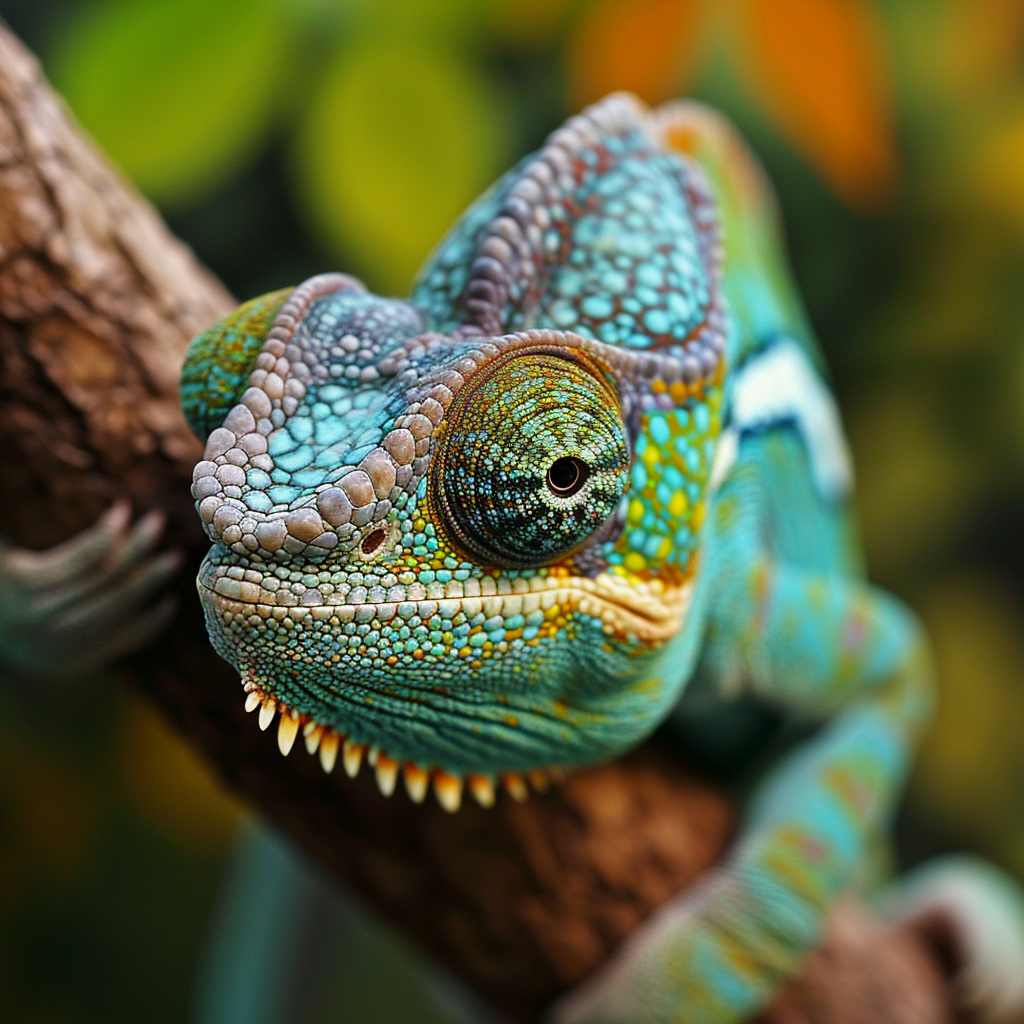
Do Chameleons Bite?
The question of whether chameleons bite is a common concern among those who interact with these reptiles. While chameleons may bite under certain circumstances, it is important to understand the factors that contribute to their aggression and employ effective strategies to prevent potential bites.
Common misconceptions about chameleon bites
There are several misconceptions surrounding chameleon bites. One common misconception is that chameleons are inherently aggressive and prone to biting. While some individuals may display aggression, not all chameleons exhibit this behavior. Additionally, chameleons are generally non-venomous, so their bites are not toxic or harmful unless they become infected.
Instances of chameleons biting humans
While chameleon bites are relatively rare, they can occur under certain circumstances. Chameleons may bite if they feel threatened or cornered, or if they mistake a finger or hand for prey. Bites can also occur during territorial disputes or when attempting to handle a chameleon inappropriately. However, instances of chameleon bites are typically uncommon, and most interactions with these creatures can be safe and enjoyable if proper precautions are taken.
Factors affecting chameleon aggression
Several factors can contribute to chameleon aggression and the likelihood of a bite. Some chameleon species may be more prone to aggression than others, and individual temperament can vary. Stress, improper handling, and a lack of environmental enrichment can also increase the likelihood of aggressive behavior. It is important to provide a suitable environment for chameleons and to respect their boundaries to minimize the risk of aggression and potential bites.
Preventing chameleon bites
To prevent chameleon bites, it is essential to approach and handle these reptiles with care and respect. Avoid sudden movements, loud noises, or other stressors that may provoke a defensive response. Providing a well-designed and enriched habitat, along with proper socialization, can also reduce stress and the likelihood of aggressive behavior. It is advisable to seek guidance from experienced individuals or herpetologists when interacting with chameleons, especially if you are a beginner.

Chameleon Bites: Severity and Treatment
In the rare event of a chameleon bite, it is important to understand the severity of the bite and the necessary steps for providing appropriate treatment.
Typical effects of chameleon bites on humans
Chameleon bites on humans typically result in minor injuries such as puncture wounds or small lacerations. The bite may cause some bleeding and localized pain. In most cases, the effects of a chameleon bite can be managed with basic first aid and proper wound care.
Potential risks and complications
While chameleon bites are generally harmless, there is a potential risk of infection if the wound is not properly cared for. Bacterial contamination from the chameleon’s mouth or from the environment can lead to complications if left untreated. It is crucial to clean the wound thoroughly and monitor it for any signs of infection, such as increased pain, redness, swelling, or discharge.
First aid for chameleon bites
When bitten by a chameleon, it is important to remain calm and take immediate steps to address the bite. Gently remove the chameleon’s jaws from the wound, being careful not to aggravate the bite further. Wash the wound with mild soap and warm water to cleanse it. Apply an antiseptic ointment and cover the wound with a clean bandage. Monitor the wound for any signs of infection and seek medical attention if necessary.
Seeking medical attention
While most chameleon bites can be managed with basic first aid, it is advisable to seek medical attention if there are any concerns or complications. Medical professionals can evaluate the wound, prescribe antibiotics if necessary, and provide further guidance on wound care and potential risks.
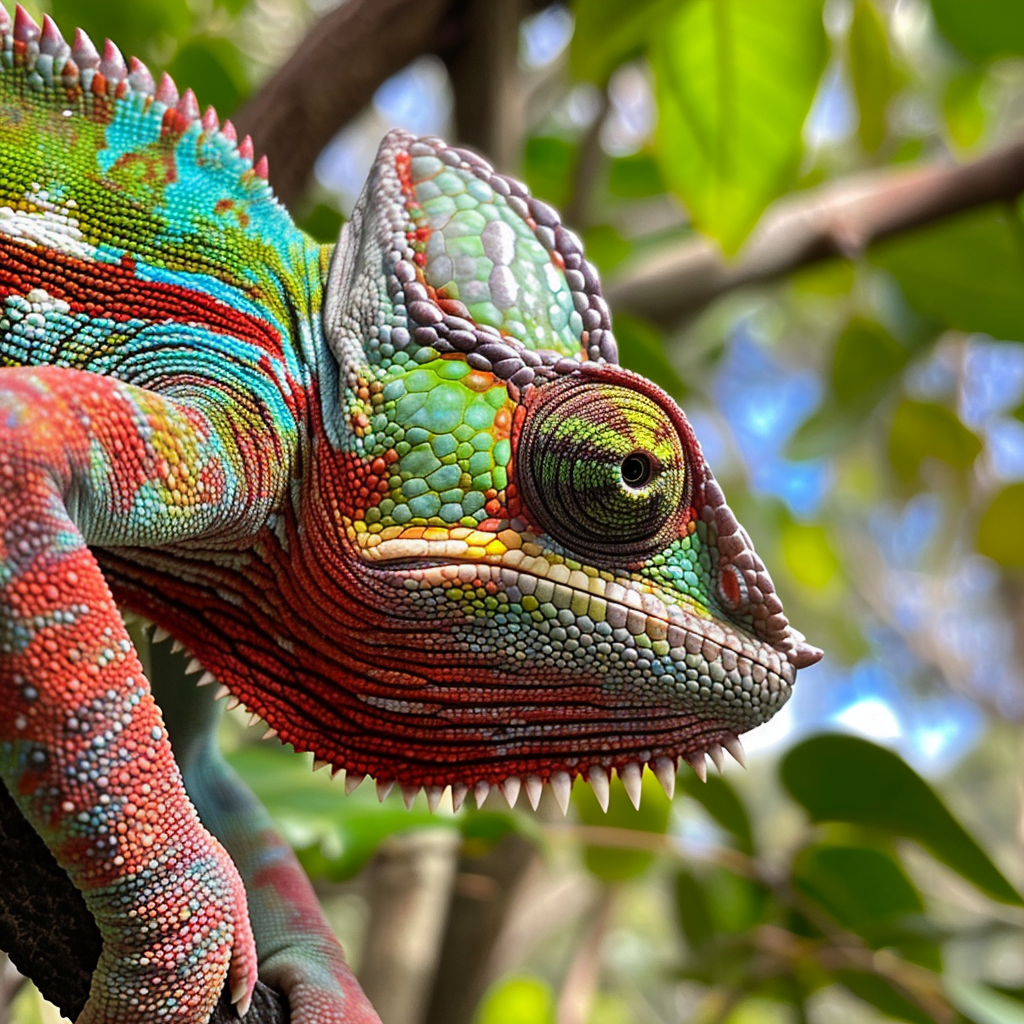
Caring for a Chameleon
Proper care and husbandry are crucial for the health and well-being of chameleons, whether they are kept as pets or in a conservation setting. Understanding their needs and implementing appropriate care practices is essential for their long-term welfare.
Creating a suitable habitat
Chameleons require a specialized habitat that closely resembles their natural environment. This includes providing a spacious enclosure with ample climbing opportunities, live plants for perching and hiding, and adequate ventilation and humidity levels. The enclosure should also be equipped with proper lighting and heating elements to replicate natural day-night cycles and maintain a suitable temperature gradient.
Proper diet and feeding schedule
A balanced and varied diet is essential for maintaining the health of chameleons. In captivity, chameleons should be fed a diet primarily consisting of appropriately sized and gut-loaded insects, such as crickets, mealworms, and waxworms. It is important to supplement their diet with calcium, vitamins, and minerals to prevent any nutrient deficiencies or imbalances. Feeding should be done regularly, but in smaller quantities, to simulate natural foraging behaviors.
Handling and socialization techniques
Chameleons are generally not highly social animals and can become stressed if handled excessively or improperly. When handling a chameleon, it is important to do so gently and avoid excessive force or squeezing. Frequent and prolonged handling should be avoided to minimize stress and the risk of injury. It is also advisable to allow chameleons to acclimate to their environment and establish a sense of security before attempting any form of handling.
Regular health check-ups
Regular health check-ups are crucial for monitoring the overall well-being of chameleons. This includes regular visits to a qualified reptile veterinarian who can assess their overall health, check for any signs of illness or injury, and provide guidance on any necessary treatments or adjustments to their care regimen. Regular health check-ups play a vital role in ensuring the longevity and quality of life for these unique reptiles.
Legal Considerations and Ethical Practices
Responsible ownership and care of chameleons entail understanding and adhering to legal regulations and ethical practices. This includes considerations for their availability, responsible breeding, and supporting conservation efforts.
Availability and ownership regulations
Chameleon ownership is subject to regional and national regulations and restrictions. It is essential to be familiar with and comply with the laws regarding chameleon ownership in your jurisdiction. Some chameleons and certain species may require permits or licenses to acquire and keep legally.
Responsible chameleon breeding practices
Responsible breeding practices are crucial for maintaining the health and genetic diversity of chameleon populations. Breeding should only occur with healthy individuals of suitable age and under appropriate conditions. It is important to research and understand the specific requirements of each chameleon species before attempting to breed them. Breeding programs should prioritize the welfare and well-being of the chameleons involved.
Supporting conservation efforts
Chameleons face various conservation challenges, including habitat loss, illegal pet trade, and climate change. Supporting conservation efforts can help protect and preserve these unique creatures for future generations. This can be done through supporting reputable conservation organizations, participating in citizen science initiatives, and raising awareness about the importance of chameleon conservation.
Educating others about chameleon care
Education plays a crucial role in promoting responsible chameleon care and ensuring the well-being of these reptiles. Sharing knowledge and expertise with others can help dispel misconceptions, enhance understanding, and encourage responsible ownership and care practices. It is important to educate others about the specific needs of chameleons, the ethical considerations of their care, and the importance of preserving their natural habitats.
Conclusion
Chameleons are remarkable creatures with a wealth of unique physical, behavioral, and feeding adaptations. Understanding their nature, including their physical characteristics, behavior, feeding habits, and defensive mechanisms, is essential for promoting informed interactions and responsible care. By appreciating the beauty and uniqueness of these creatures and ensuring their well-being, we can foster a greater understanding and appreciation for chameleons while playing a role in their conservation and preservation.
